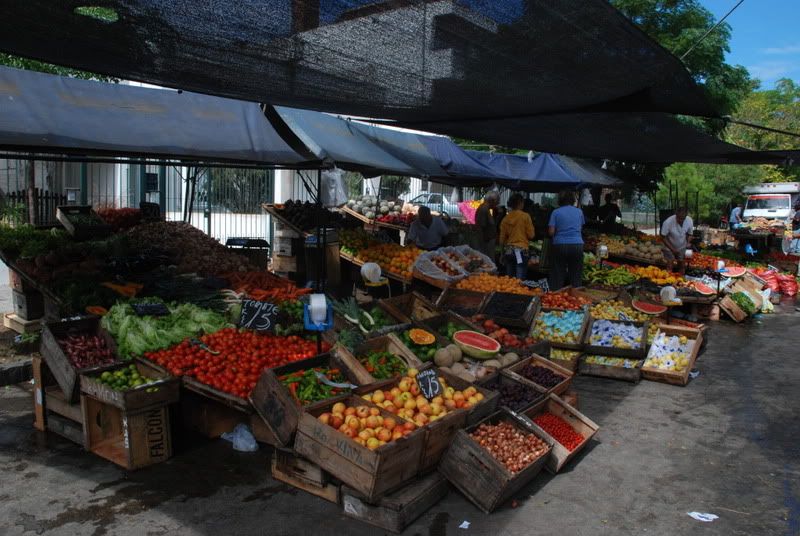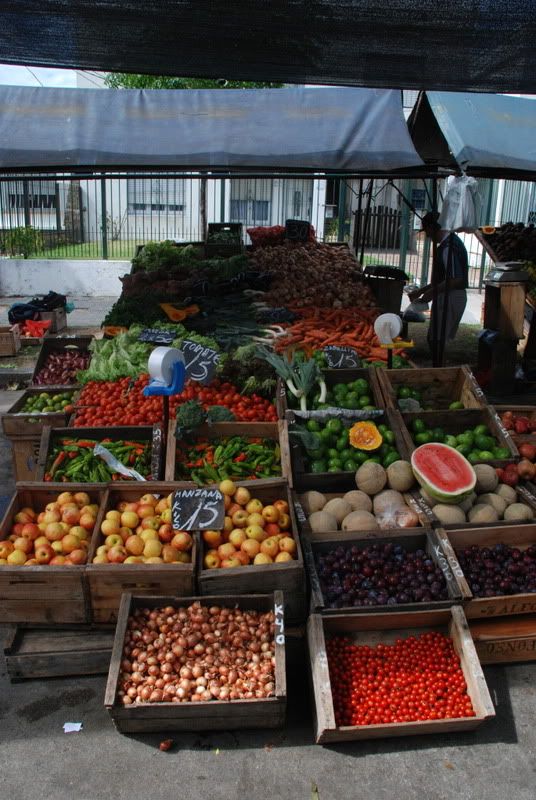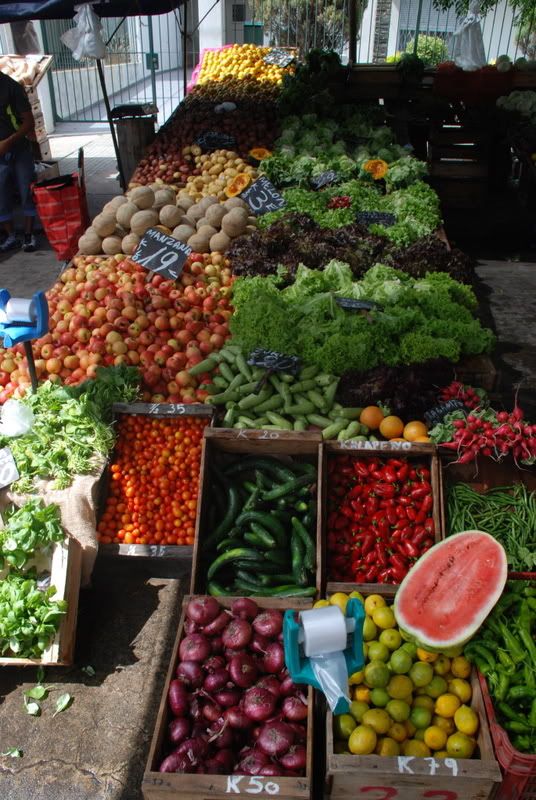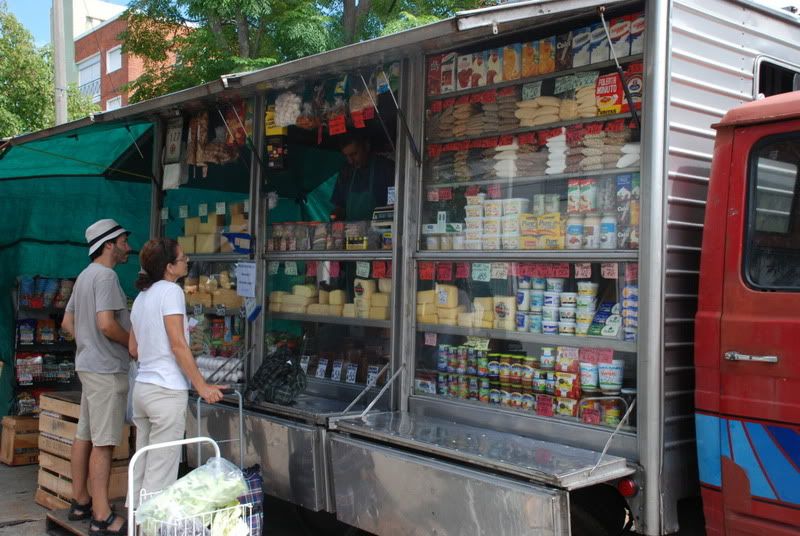There are many interesting things about Uruguayan culture that stand out against my United States upbring. Because the US is so large, this reference more directly reflects my Western Washington upbringing in and around the Seattle area. Even though I have traveled quite a bit around the world, I have never lived long term in another location. So I use Seattle as my frame of reference for these comparisons.
In Seattle, there are several neighborhoods that host organic farmers markets. For instance, on wedenesday the farmers market is located in Columbia City, while on saturday it may be located in Capital hill. In my opinion, the farmers markets in Seattle are geared towards individuals concerned with personal and global health, and perhaps a few foodies thrown into the mix. I cant say I know a ton of people that use them, but I do know a handful that are dedicated organic shoppers.
Personally, during my last year in Seattle I lived in the middle of downtown. I had the Pike Place Market nearby, but I chose to do the majority of my food and produce shopping at the Whole Foods supermarket - which only sells (expensive) organic produce. And when I say expensive, I mean expensive. Wholefoods is unlike other supermarkets like QFC or Safeway, who sell both produce and organic produce. Whole Foods concentrates on selling only natural and organic products.
Here, in Montevideo there are farmers markets as well. These local markets are referred to as a feria (pronounced Ferry-uh) in spanish. Like Seattle, these ferias change location depending on the day of the week as well. Yet unlike Seattle, these ferias have a different feel to them. First of all, the feria sets up shop on a neighborhood street, with tables and stands on both sides of the street stretching the entire length of the block. It has a very rustic feel to it. They use old wooden crates to move and display the options. And they use slate and chalk to diplay the prices.
 These photos illustrate the more elaborate setups on the block, but there are several stands that dont have the display skills that these produce stands have.
These photos illustrate the more elaborate setups on the block, but there are several stands that dont have the display skills that these produce stands have. The produce here is all locally grown. Thus, there are no blueberries from Venezuela, strawberries from Mexico, or Mangos from Guatemala. If its in season, then its on the plate.
The produce here is all locally grown. Thus, there are no blueberries from Venezuela, strawberries from Mexico, or Mangos from Guatemala. If its in season, then its on the plate.  Although they sell produce in the supermarkets here, most people visit the ferias when they are in their area of town during the week. Walking the produce stands you can see the spectrum of individuals that live nearby, young to old. The ferias here are traditional, and do not stem from a food movement that encourages organic produce over other produce. Organic produce is what they grow here, and have grown most likely since farming practices were introduced here. Its wonderful to see an old neighborhood tradition that brings the block together over fresh food.
Although they sell produce in the supermarkets here, most people visit the ferias when they are in their area of town during the week. Walking the produce stands you can see the spectrum of individuals that live nearby, young to old. The ferias here are traditional, and do not stem from a food movement that encourages organic produce over other produce. Organic produce is what they grow here, and have grown most likely since farming practices were introduced here. Its wonderful to see an old neighborhood tradition that brings the block together over fresh food.
I would guess that 85% of the stands sell produce, yet there are a handful of other stands that sell non-produce items as well. I think there is a fish stand or two. Plus there are two or three stands like this one below. They sell cheese, milks, yogurts, butters, nuts, granola, beans, jams, honey and misc. items like that. This is the place to purchase the delicious locally made cheeses of the region.

Needless to say, the prices in the feria are a great deal. Perhaps that is how they have been able to persevere over time in the battles against chain supermarkets.
Not all ferias are alike either. This one that I took photos of is supposed to be relatively small in comparison to a few others they have around town. I cant wait to pay a visit to a few others in order to size up the competition.
Take note as well -There is also another type of feria here that sells non-food items. Mari and I have been hitting those ferias as well. after I signed up for my gym membership, we hit the feria for reduced prices on gym shorts, socks, t-shirts, underwear, and related items.
No comments:
Post a Comment